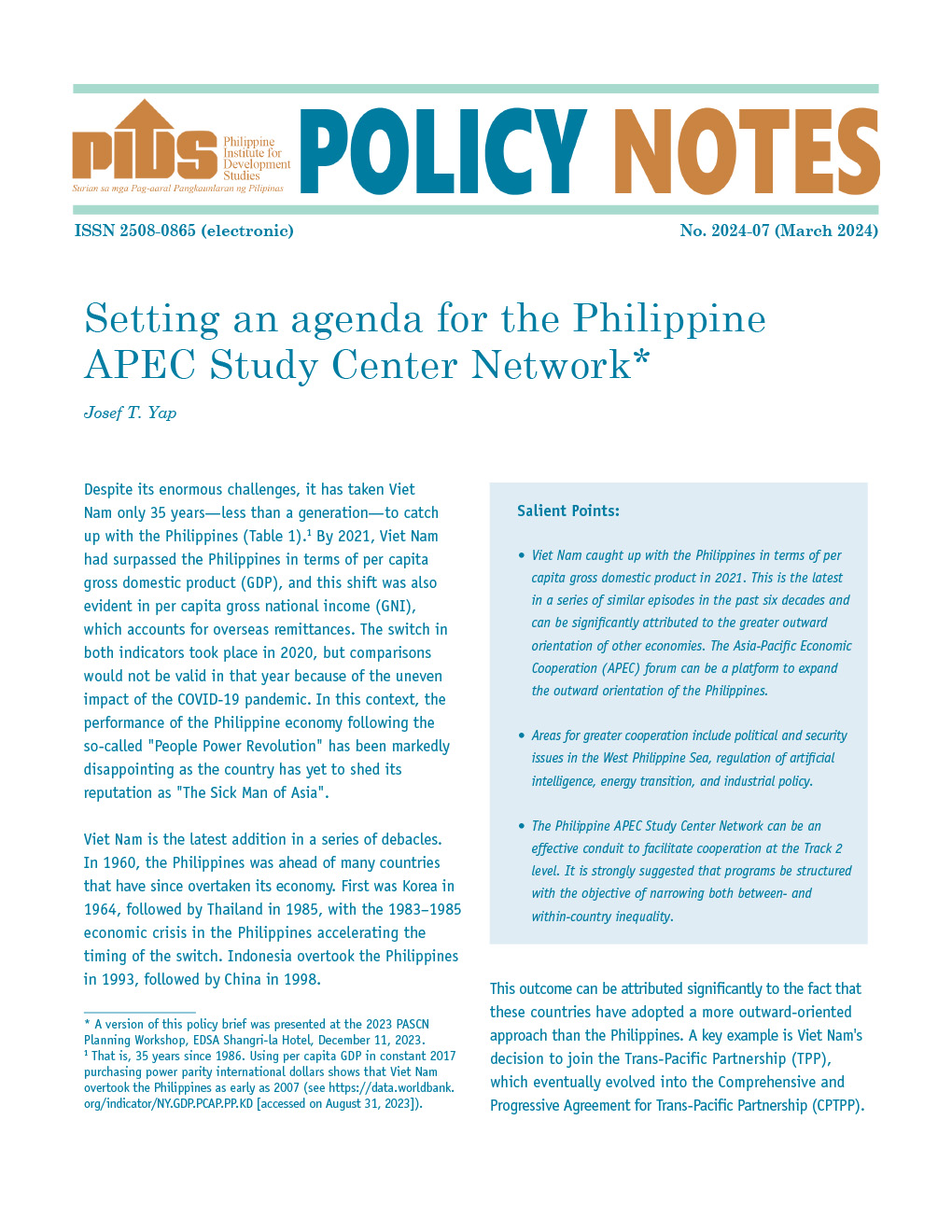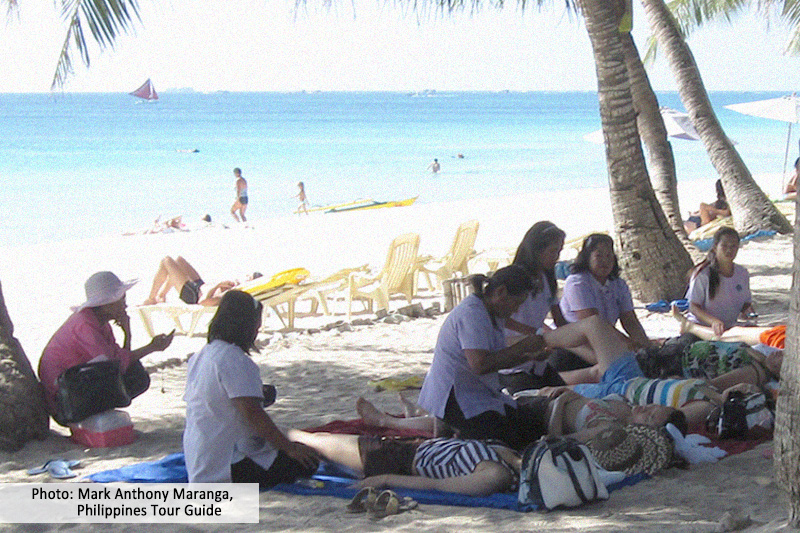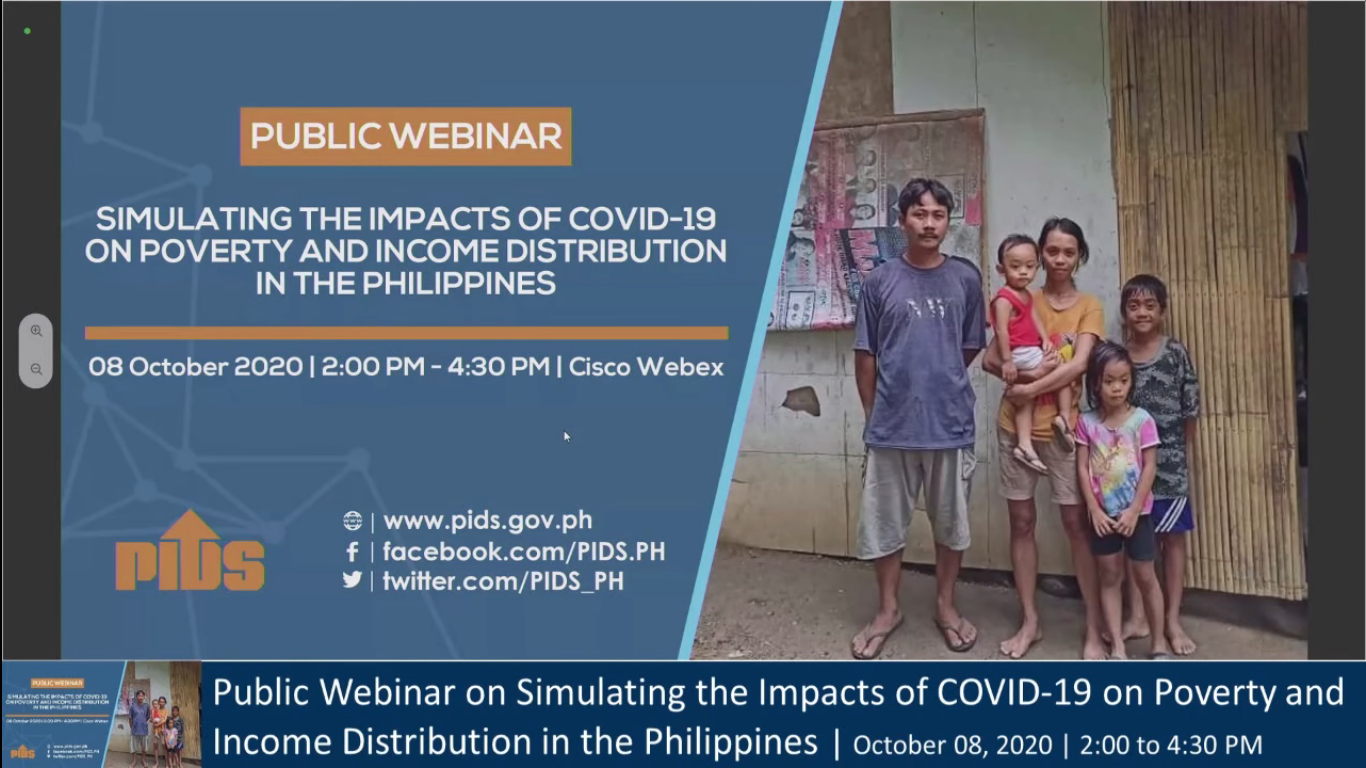The income distribution among families in the Philippines improved in 2015 versus the comparable period in 2012, although data showed that income inequality still varies across the regions.
According to the results from the 2015 Family Income and Expenditure Survey (FIES), the Gini coefficient, which is a measure of income inequality within a population, was estimated at 0.4439 for 2015.
“This figure is slightly lower than the 2012 ratio of 0.4605, which may indicate some improvement in the income distribution among families,” the Philippine Statistics Authority said.
A Gini coefficient ranges from zero to one, with zero indicating perfect income inequality among families, while a value of one indicates absolute income inequality.
Jose Ramon Albert, senior research fellow at the Philippine Institute for Development Studies, said historically, the Philippines has had high income inequality which has been a barrier to poverty reduction.
“Growth tends to be largely felt by the rich, more than the poor. So clearly, the conditional cash transfer and other poverty programs has finally gained traction to reduce poverty and income inequality,” Albert said.
“In all developing countries, inequality may be understated as the very wealthy may not be captured in the surveys. However, even if there is consistent bias in the measurement, when the levels are going down, that is a good thing. Even if there maybe concerns that inequality (is) being understated, when trends go down, that is good news,” he added.
Cid Terosa, University of Asia & the Pacific economist, likewise said there is significant improvement in income distribution.
“For income distribution to improve further, the poorer income classes need to sustain improvements in their market income,” Terosa said.
“This can be achieved through sustained economic growth and income redistribution policies,” he added.
According to the FIES data, the income inequality was higher in five regions compared to the average Gini coefficient across the country.
These are regions IV-B - MIMAROPA (0.4568), VII - Central Visayas (0.4647), VIII - Eastern Visayas (0.4649), X - Northern Mindanao (0.4636) and XII - SOCCSKSARGEN (0.4626).
The lowest income inequality, as measured by the Gini coefficient, is in the Autonomous Region in Muslim Mindanao (ARMM), at 0.2801. For the National Capital Region(NCR), it is also lower than the country average, at 0.3909.
“The ARMM has the lowest inequality because almost everyone there is poor. Income differences among those in ARMM aren’t wide,” Terosa said.
“In Metro Manila, as is expected, you have extremes, so inequality is higher,” Albert, for his part, said.
The FIES data also showed that the average annual family income of Filipino families was P267,000, while the average annual family expenditure was P215,000. Thus, Filipino families have savings of P52,000 a year, on average.
The survey grouped and ranked families into per capita income deciles, with the richest decile representing families belonging to the highest 10 percent in terms of per capita income, while the poorest decile represents families in the lowest 10 percent.
The data showed that the average annual family income of the richest decile was about nine times that of the poorest decile.
Specifically, the richest decile had an average family income of P786,000 in 2015, while they spent P534,000 on average, with savings of P252,000.
In comparison, the poorest decile had an annual average income of P86,000 per family. The average annual family expenditure was P89,000, indicating that the poorest family, on average, was unable to save, and even had a shortfall of P3,000.
Among regions, families in the NCR had the highest average annual family income at P425,000 in 2015, while expenditures amounted to P349,000, equivalent to average annual savings of P76,000.
On the other hand, the lowest family income, on average, was in ARMM, at P139,000. Average annual expenditures amounted to P111,000, resulting to savings of P28,000 per year.
Rosemarie Edillon, National Economic and Development Authority deputy director general, said the government is not targeting any specific figure for the Gini coefficient.
“We are actually not targeting the Gini, but we would rather see a much faster reduction in poverty in the regions that have lagged behind,” Edillon said.
“There is a lot more work ahead, particularly in reducing inequality across regions and sectors. We need to pay greater attention to the lagging regions particularly in Mindanao, as well as to the agriculture sector where many of the poor are found,” she added.
Albert likewise agreed that much still needs to be done to bring down inequality and poverty.
“The Sustainable Development Goals which we signed up to has a goal of zero poverty by 2030,” Albert said.
“There are no specific targets on inequality other than to bring it down,” he added.//
According to the results from the 2015 Family Income and Expenditure Survey (FIES), the Gini coefficient, which is a measure of income inequality within a population, was estimated at 0.4439 for 2015.
“This figure is slightly lower than the 2012 ratio of 0.4605, which may indicate some improvement in the income distribution among families,” the Philippine Statistics Authority said.
A Gini coefficient ranges from zero to one, with zero indicating perfect income inequality among families, while a value of one indicates absolute income inequality.
Jose Ramon Albert, senior research fellow at the Philippine Institute for Development Studies, said historically, the Philippines has had high income inequality which has been a barrier to poverty reduction.
“Growth tends to be largely felt by the rich, more than the poor. So clearly, the conditional cash transfer and other poverty programs has finally gained traction to reduce poverty and income inequality,” Albert said.
“In all developing countries, inequality may be understated as the very wealthy may not be captured in the surveys. However, even if there is consistent bias in the measurement, when the levels are going down, that is a good thing. Even if there maybe concerns that inequality (is) being understated, when trends go down, that is good news,” he added.
Cid Terosa, University of Asia & the Pacific economist, likewise said there is significant improvement in income distribution.
“For income distribution to improve further, the poorer income classes need to sustain improvements in their market income,” Terosa said.
“This can be achieved through sustained economic growth and income redistribution policies,” he added.
According to the FIES data, the income inequality was higher in five regions compared to the average Gini coefficient across the country.
These are regions IV-B - MIMAROPA (0.4568), VII - Central Visayas (0.4647), VIII - Eastern Visayas (0.4649), X - Northern Mindanao (0.4636) and XII - SOCCSKSARGEN (0.4626).
The lowest income inequality, as measured by the Gini coefficient, is in the Autonomous Region in Muslim Mindanao (ARMM), at 0.2801. For the National Capital Region(NCR), it is also lower than the country average, at 0.3909.
“The ARMM has the lowest inequality because almost everyone there is poor. Income differences among those in ARMM aren’t wide,” Terosa said.
“In Metro Manila, as is expected, you have extremes, so inequality is higher,” Albert, for his part, said.
The FIES data also showed that the average annual family income of Filipino families was P267,000, while the average annual family expenditure was P215,000. Thus, Filipino families have savings of P52,000 a year, on average.
The survey grouped and ranked families into per capita income deciles, with the richest decile representing families belonging to the highest 10 percent in terms of per capita income, while the poorest decile represents families in the lowest 10 percent.
The data showed that the average annual family income of the richest decile was about nine times that of the poorest decile.
Specifically, the richest decile had an average family income of P786,000 in 2015, while they spent P534,000 on average, with savings of P252,000.
In comparison, the poorest decile had an annual average income of P86,000 per family. The average annual family expenditure was P89,000, indicating that the poorest family, on average, was unable to save, and even had a shortfall of P3,000.
Among regions, families in the NCR had the highest average annual family income at P425,000 in 2015, while expenditures amounted to P349,000, equivalent to average annual savings of P76,000.
On the other hand, the lowest family income, on average, was in ARMM, at P139,000. Average annual expenditures amounted to P111,000, resulting to savings of P28,000 per year.
Rosemarie Edillon, National Economic and Development Authority deputy director general, said the government is not targeting any specific figure for the Gini coefficient.
“We are actually not targeting the Gini, but we would rather see a much faster reduction in poverty in the regions that have lagged behind,” Edillon said.
“There is a lot more work ahead, particularly in reducing inequality across regions and sectors. We need to pay greater attention to the lagging regions particularly in Mindanao, as well as to the agriculture sector where many of the poor are found,” she added.
Albert likewise agreed that much still needs to be done to bring down inequality and poverty.
“The Sustainable Development Goals which we signed up to has a goal of zero poverty by 2030,” Albert said.
“There are no specific targets on inequality other than to bring it down,” he added.//










